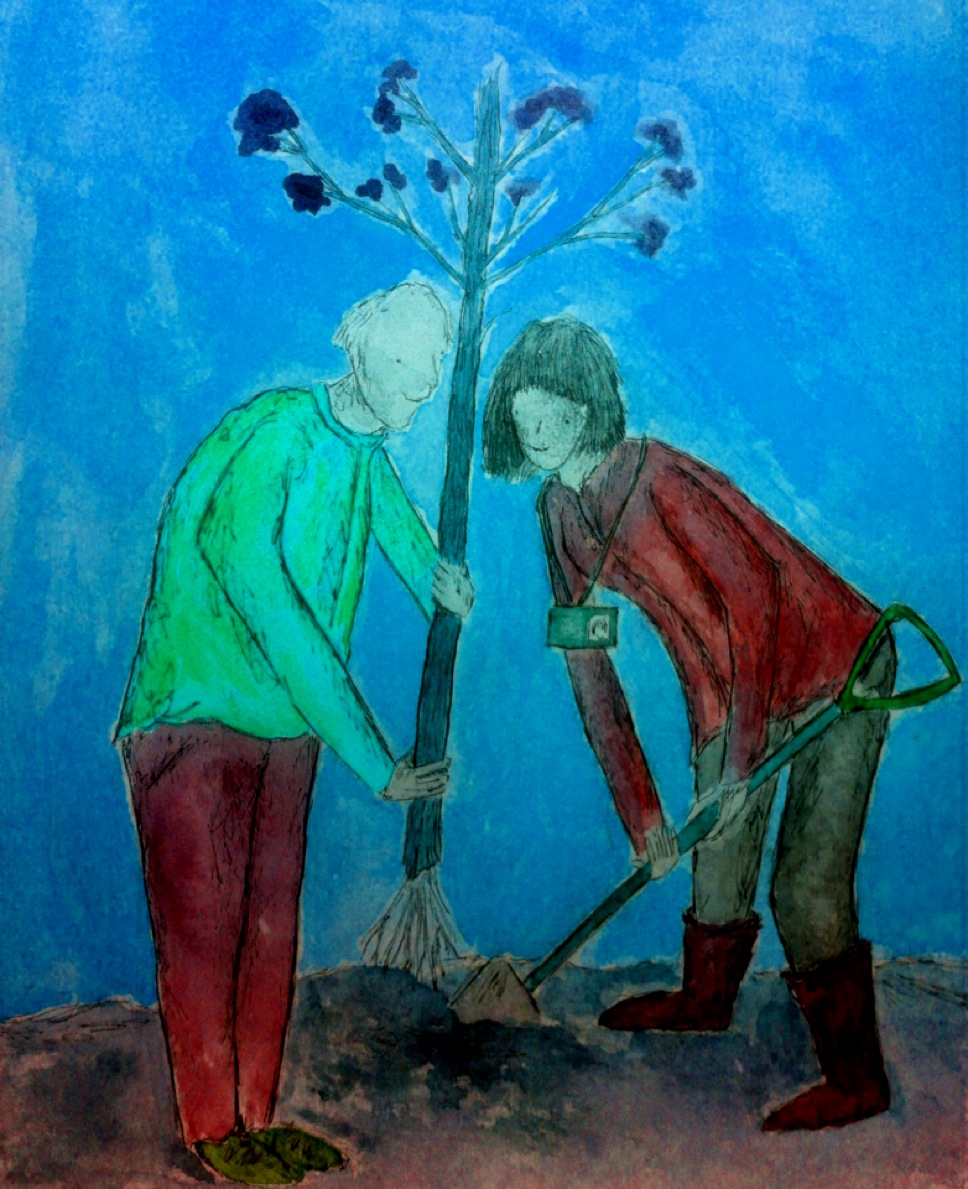Academic and activist, James Derounian offers a simple mechanism for accelerating ground-level ‘People Shaped Localism’
There I was, minding my own business at a Regional Studies Association conference on localism, a couple of years ago; when I was woken from torpor by an academic waxing lyrical, about “the need for an ultra-local, democratic vehicle to make localism happen on the ground……” I was incensed. And proceeded to ask whether the speaker was aware of local councils that had been in existence since 1894, are a formal part of English (& Welsh) local government, have tax raising powers, are democratically accountable and exercise powers under the Localism Act 2011?
The speaker is in good company in failing to register these most local councils as engines of localism – central government, political parties, think tanks and other agencies regularly omit this potential and actual dynamo for local action. I will keep you guessing a little longer as to precisely what I am talking about!
Globally, the United Nations recognises “local governance as the most accessible level of engagement with publicauthority and works with local authorities and civil society to involve communities indeciding on priorities for local development”.So practically speaking, how, and at what level and scale is such accessibility likely to succeed in connecting with citizens?

Councillors Need to Be Agents of Change Too - Artist Joseph Houlders
The answer is in the name - Local Councils – the collective name for English Town & Parish, plus Welsh Town & Community, Councils. Of which there are 9,000+, served by 80,000 volunteer councillors. With such authorities providing employment for over 25,000 staff and with an annual spend of some £1 billion; with over 16 million people (25% of the population) living in the communities they serve… electorates ranging from villages to major cities. Together, they constitute a formidable collection of grassroots opinion. Such councils pop up in unlikely places, like West London’s Queens Park; Sutton Coldfield, population 95,000 and Dover, serving around 28,000 constituents.
Parish Councils are sustainable units, in that have existed for 121 years and counting! This links to their intrinsic value in terms of community development “as a long-term…process” (Gilchrist & Taylor 2011). Local councils took over functions from the Church of England and other bodies. And herein lies one reason why such organisations are misunderstood – ’Parish Council’ sounds all too close to ‘Parochial Church Council (PCC)! The latter are restricted to promoting activities of the Church of England, and involve members of a congregation plus clergy.
The umbrella body, the NALC (National Association of Local Councils) identifies three roles for local councils; to
- represent the local community
- deliver services to meet local needs, and
- improve community wellbeing through provision of a range of services
As Pearce & Ellwood noted in 2002, “population size is a crucial determinant of the capacity of parish and town councils to provide services.” Basically the larger the population, the more services will be provided, as the revenue raising potential of a council increases and there is greater demand.
So what have Parish, town and community councils ever done for us? Legally they can deliver a range of services: from community centres to festivals, allotments to buses. They can also operate in partnership with others or as agents. They are able to take on many principal authority (District, County, Borough or Unitary) services or assist local charities to help young people. Local councils offer funding, equipment and premises, to enable others to help local communities: For example, giving grants to organisations that run childcare, provide for young people with special needs, or for the elderly, arts activities and exhibitions, play activities or sports pitches and facilities; all of which can improve the quality of parish life. And modest grant aid can unlock further monies from other agencies such as Big Lottery.
The last major survey of - 1,000 - Parish and Town Councils in England (for the then-DoE, 1992) established the services on which councils spent money during 1989/90. We are now almost a quarter of a century on, and there is a desperate need to update the survey of local council activity which – I am certain - would demonstrate a major acceleration in the range and number of services provided.

Local Councils are self-financing bodies, drawing their main income from the precept, a tax on local people. Duncan (2002) observes that the level of precept depends on whether the council is “tiddly or big, busy or dormant.” According to the DCLG it can range from below £500 to well over £1,000,000.
Decisions are made by volunteer councillors who are accountable to the community they often live within; so residents have direct access to such representatives. Councils therefore act as ‘bridging’ social capital: making connections within and beyond the immediate locality. Local Councils give practical expression to Abraham Lincoln’s “government of the people, by the people, for the people” (1863).
Service provision to local communities does not, however, translate into recognising the existence - let alone potential - of local councils by higher tier authorities, other agencies & think tanks. The 2015 UK Labour party Rural Manifesto, for example, did not mention local councils at all. Devolution was only promised to 'County Regions' – such as Greater Manchester. Similarly Locality, an organisation supporting local initiatives across England, published Keep it Local: for better services, again, without registering the role of parish and town councils.
It may surprise readers to know that a significant number of PCSOs are funded by local councils. Or take a single Town Council – Calne in Wiltshire – that is developing land for shared-equity (part rent-part ownership) affordable homes. They are also offering Modern Apprenticeships so that 2 young people can earn and learn simultaneously. Their state of the art CCTV and street-cleaners deliver ‘shop watch’ (funded by the town council); as a result in 2016 a suspect was picked up by police using intel from one of the council’s street staff.
So - in spite of the cloak of invisibility - local councils offer an existing tried-and-tested mechanism for localism that is intelligible to, and within reach of, citizens. “Local Councils exemplify Alexis de Tocqueville’s contention, from as far back as 1835, that the 'strength of free peoples resides in the local community. Local institutions are to liberty what primary schools are to science; they put it within the people's reach; they teach people to appreciate its peaceful enjoyment and accustom them to make use of it.”
James Derounian is a National Teaching Fellow and Principal Lecturer Community Engagement and Governance at the University of Gloucestershire. James' teaching, action research and consultancy relate to local governance, rural social issues and community engagement.
Related articles
-
Blog: Shifting the Narrative of Local
Jocelyn Cunningham
Last month the RSA, as part of the People Shaped Localism programme, hosted a roundtable entitled The Felt Local: arts based approaches to belonging and identity. RSA Associate Jocelyn Cunningham reflects on the insights from the roundtable regarding perceptions of what local means and who this includes.
-
Blog: Volunteering, bricks and laser guns
Thomas Hauschildt
Volunteering is about much more than providing your labour for free. Volunteering is about empowerment, connection, trust, learning and sharing – giving and taking alike.
-
Blog: Devo-Big and Small Acts of Kindness
Paul Buddery
Under a creative account of localism, what is the role of public authorities and services in enabling volunteering?



Join the discussion
Comments
Please login to post a comment or reply
Don't have an account? Click here to register.
Perhaps local councils should adopt a more active feedback mechanism using the Internet and other local media to describe the quantified results achieved in the previous 12 months.
This might be in the form of an end-of-year statement.
Example:
Your local council (name) conducted a local survey of its xxx,000 residents in (month). The major findings were:
1.
2.
Etc
As a result we have initiated a program to introduce weekly Green Markets and increase the availability of local-grown fruit and vegetables.
The RSA might foster such an approach by awarding an Annual Prize for the best examples of such good practice both in the UK and beyond, including the US.
This is a great article, and I wish that someday this type of education is implemented into public education here in the US. Programs can be developed to educate students about social and civil responsibilities they will face in the future.
See my earlier comment on feedback. RSA should find ways to encourage performance measurement that demonstrates local government is for the people and by the people.
See the attached file:///Users/nycrobin/Desktop/Neets%20by%20country.png
This demonstrates a big problem right under our nose about youth unemployment. It may explain in part the anger and frustration of young people today that drives them to join terrorist organizations.